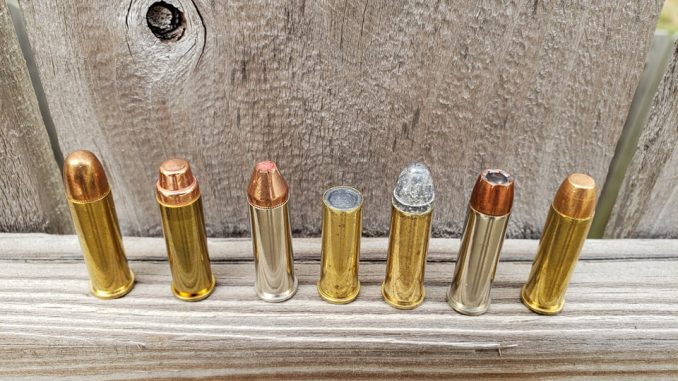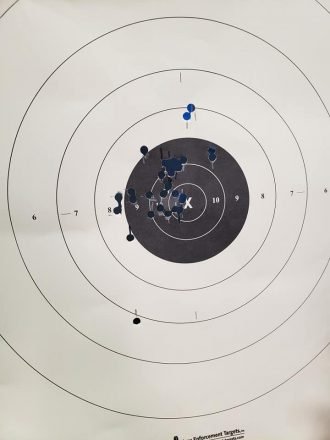
From wadcutters, jacketed hollow points, full metal jacket, to heat seeking baby killers and more. Today we have more options for defensive ammunition than at virtually any point in history. While this allows us to refine our selection for our specific purposes, it also has created room for a lot of bad information and snake oil. How do we determine what is good and bad defensive ammunition? Luckily we have a few resources.
Ammunition Selection
The FBI’s report on handgun ballistics is where everybody should start. This outlines specifications for both penetration and expansion, which should both be met for a round to function appropriately. Unfortunately, with calibers that many of our micro sized firearms are chambered in, meeting both of these criteria is going to be difficult if not impossible. Defensive ammunition in .38 Special is known for achieving one or the other. Either the round expands too much and fails to penetrate, or penetrates appropriately, but fails to expand. The same is often true with .380ACP, .32ACP, .22WMR, and similar rounds. When faced with these options, what do we choose?
Penetration is the answer here. The vital organs we are targeting are located fairly deeply within the body, and often protected by bones, muscle, and other fleshy material. If our ammunition has limited ability to penetrate, we may not get the depth required to hold these targets at risk. Typical FBI recommendation for penetration is a minimum of 12 inches. While a heart or brain stem may not be 12 inches deep in the body, this provides wiggle room for punching through the previously mentioned barriers.
Skipping hollow-point ammunition in favor of common ball ammo is typically heresy with modern service calibers such as 9×19, .40S&W and .45ACP. However, that is actually a viable solution with rounds like the .38 Special, .32 long, and similar calibers in autoloaders. This is due to round nose ammo virtually guaranteeing appropriate penetration. When using a revolver, we have the added benefit of not being concerned with a feed ramp. This allows us to take advantage of the venerable wadcutter.
What are Wadcutters?
If you’re not familiar with wadcutters, imagine a soup can coming out of the muzzle of your gun, the same diameter as your bore. The rounded nose of typical Full Metal Jacket ammunition often fails to create an effective permanent cavity in flesh. Simply pushing aside meat, which then closes back up. With a wadcutter, the 90 degree angle from the flat nose to the cylindrical wall of the bullet cuts through flesh, like your teacher’s hole punch through paper. We can easily see this with the differences in holes punched through paper when shooting FMJ and wadcutters side by side. This ensures a more effective permanent wound cavity, leading to more rapid incapacitation of our threat.

Most wadcutters are match grade, designed specifically for competition shooting. This means higher quality control in terms of reliability, accuracy, and consistency for your defensive ammunition. Being focused on target shooting, wadcutters also often feature relatively low velocities. Low velocity means low recoil, with commons rounds averaging between 530 and 720 feet per second. My preferred Federal Gold Medal Match sits firmly in the middle at 659FPS. This is in contrast to the average 770-950FPS of FMJ and JHP loads, with most sitting above the 800 mark. While we’re not quite reaching “mouse fart” territory, the reduction in velocity does translate to a slightly easier round to shoot without significantly reducing effectiveness of the ammunition. This is especially noticeable in lightweight, carry focused guns, improving the accuracy and rapidity of follow up shots.
Downsides to Wadcutters
I’d be remiss if I didn’t mention some of the shortcomings of wadcutter ammunition.
The most glaring issue is when it comes to reloading your revolver, especially under pressure. The flat bullets give you no room for error when trying to insert them into the cylinder’s charge holes. Using them with speedloaders is a herculean task, and it’s not much better with speed strips or moon clips. My solution is to simply carry a different load for my spare ammunition, typically 135gr +P Speer Gold Dot. This specific load performs very well, and shoots to my sights almost as well as my 148gr Gold Medal Match, but with quite a bit more recoil. I’m also a fan of Hornady 110gr +P Critical Defense for its reliability, accuracy, and penetration–though expansion is stereotypically lacking.
Cost and availability are also considerations. It is incredibly rare that I find wadcutters of any sort on the shelves of my local shops. When I do, it is typically an ancient box of questionable quality, or an exorbitantly priced box of Gold Medal Match. An easy solution is to buy online, but being match grade, the price tag always hurts my wallet.
Final Thoughts on Wadcutters for Defensive Revolvers
As time marches on and technology improves, our ammunition gradually edges closer to ideal performance. Despite this, many of our sub-service calibers still find themselves lacking. With this in mind, we must decide what currently available options best serve our needs. With high reliability, low recoil, solid wound ballistics, and excellent accuracy, the wadcutter makes a great choice in most any defensive revolver.
Support My Work
If you made it this far, thanks for reading! Writing isn’t my full-time profession, and nearly everything I do comes out of my own pocket. Between ammunition, tuition, range fees and more, expenses add up fast. If you like what I have to offer, consider making a donation to my Patreon.
Every bit helps bring more work like this to you, and contributes to shortened timelines or more in-depth work on my part. You’ll also have more direct access to me, offering suggestions for future projects, looking behind the scenes, and getting early access to some content. You can find my Patreon >>HERE<<





In 2023, using wadcutters for self defense is a mistake. Just about any modern defense round is going to expand and penetrate to at least 12 inches in gel. You won’t notice the extra recoil when the adrenaline is flowing, but the perp will know the difference between a ragged .50-.60 hole in his chest and a wad cutter.
I like Remington Golden Sabers in my LCR and 856 Defender, but there are good choices from Winchester, Speer, and Federal.
“Heat seeking baby killers”? Probably not the kind of statement that is best serving the firearms community.
That’s what we call a joke. Parodying the ridiculous statements commonly made by those wishing to take away rights. It’s even funnier and more relevant when people don’t get it and then it gets explained.
Semi- Jacketed. Semi- Wad cutter.
I’d really like to see some ammo manufacturer make 160 grain hard cast “self defense wadcutter loads” in 38 Special (~800 FPS), 38 Special +P (~950 FPS) and 357 Magnum (~1,100 FPS). Reloadng with wadcutters would be, as you point out, so slow as to be useless but at least the first 5 (or 6) rounds would be very useful.
That would negate one of the major benefits, being very low recoil. Wadcutters make FBI spec for penetration without the extra velocity, so I don’t think there’d be much to gain by upping it
Reload baby.. reload.
3.1 grains of Bullseye and 146 grain hollowbase wadcutter. You can always say you forgot to change your target loads for SD loads!
I have lots of wadcutters and several J frames!